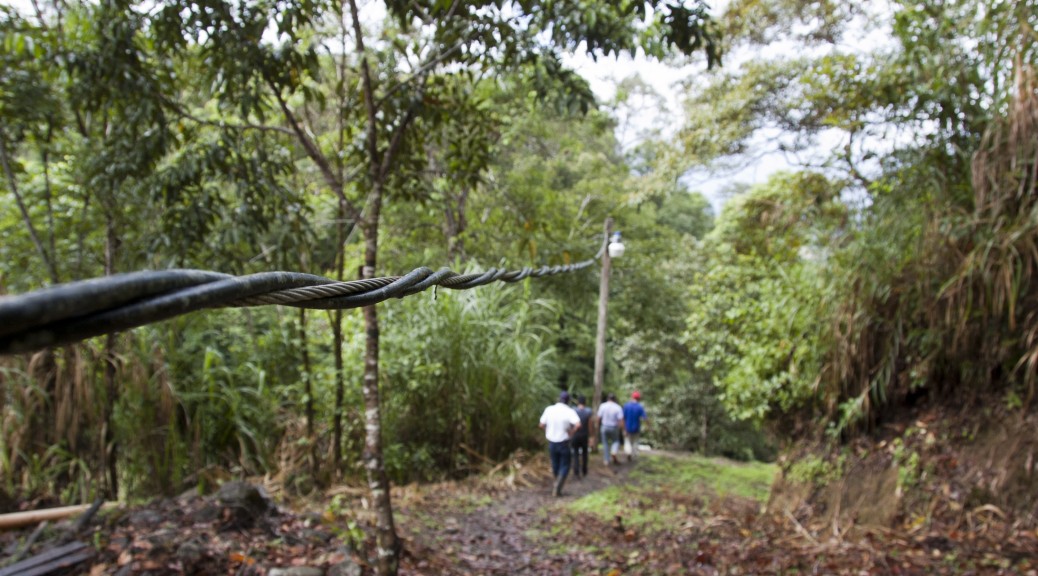Formula E, the electric version of Formula One racing, completed its first season this weekend in London with back-to-back races. NextEV driver Nelson Piquet Jr. came from behind to win the series driver championship and Virgin Racing driver Sam Bird also came from behind to win Sunday’s tight race.
Tag Archives: Technology
How Nicaraguan Villagers Built Their Own Electric Grid
On a dirt road high in Nicaragua’s northern mountains, a small knot of men and two precocious young boys uncoil electrical cable from the back of a pickup truck. Other workers swing machetes at overhanging tree branches. Along the cleared shoulder of the road, another crew tightens a cable on a freshly planted utility pole. Continue reading How Nicaraguan Villagers Built Their Own Electric Grid
Peer-to-Peer Wireless Is Increasing Competition Worldwide
U.S. regulators have been attempting to deal with the negative affect that a few large Internet providers might have on competition. Meanwhile, elsewhere in the world, new mobile technologies have been encouraging competition.
Yesterday, at Mobile World Congress in Barcelona, Spain, the chairman of the U.S. Federal Communications Commission, Tom Wheeler, promoted the net neutrality rules that the FCC recently voted to adopt, and bragged that the U.S. would “continue to be the world leader” in high-tech telecommunications. The FCC’s rules would prevent Internet service providers (ISPs) from prioritizing certain content. Critics say such “fast lanes” would undermine the principles that have led to online innovation (see “FCC Chief Proposes Broader Net Neutrality Rules”). Continue reading Peer-to-Peer Wireless Is Increasing Competition Worldwide
Remote Mexican Villages Build Their Own Cell Networks
The sound of a mobile phone is routine in much of the world. But it’s a recent arrival here in Talea de Castro, a mountain town in the southern state of Oaxaca, Mexico.
This radio report first aired on NPR’s Here and Now in partnership with IEEE Spectrum: [html] [mp3]. See also a related news story for The Economist’s Tech Quarterly: [html].
Continue reading Remote Mexican Villages Build Their Own Cell Networks


